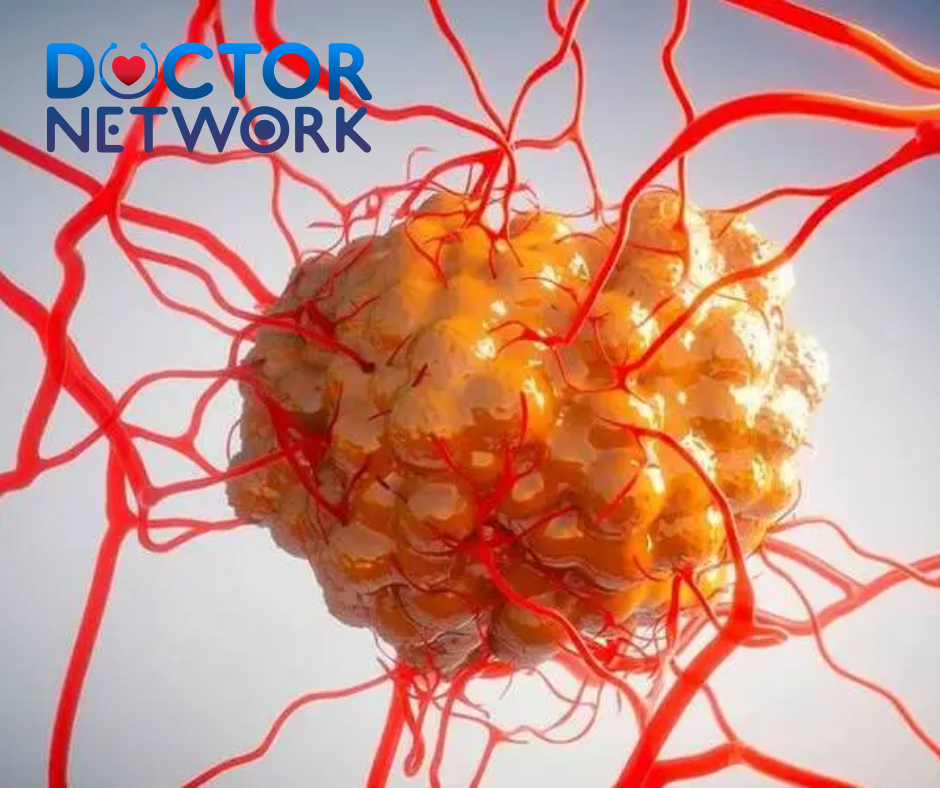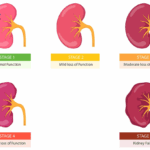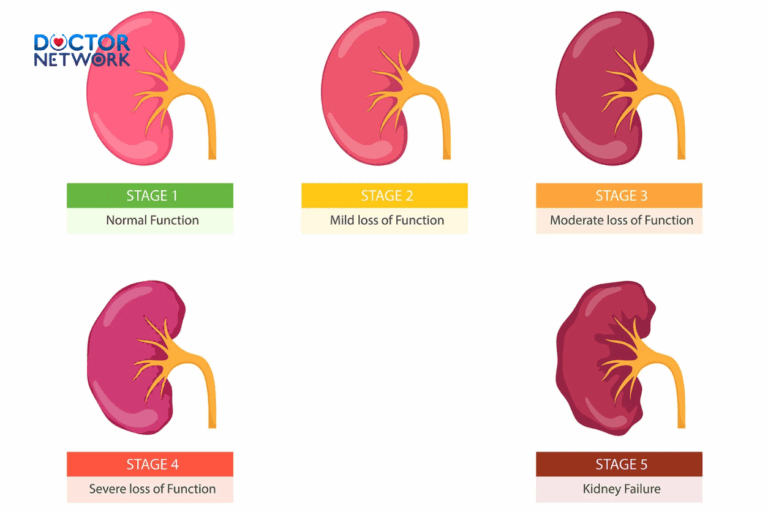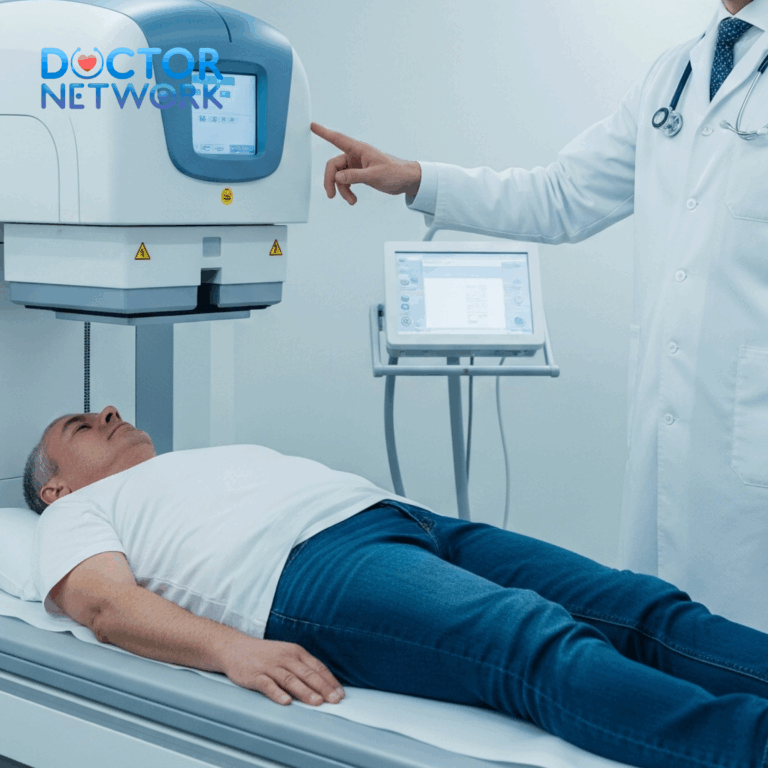Neuroendocrine tumors (NETs) represent a rare group of malignancies arising from specialized neuroendocrine cells that possess characteristics of both nerve cells and hormone-producing endocrine cells. These sophisticated cellular structures combine neuronal signaling capabilities with endocrine secretory functions, creating unique pathophysiological challenges that distinguish NETs from conventional cancers.
The diversity of NETs creates dramatically different prognoses depending on multiple critical factors including tumor location, differentiation grade, metastatic spread, and hormonal activity. While these malignancies can develop throughout the body, they predominantly manifest in the gastrointestinal tract, pancreas, and pulmonary system, each presenting distinct clinical trajectories and therapeutic considerations.
Most NETs are malignant neoplasms with varying degrees of invasiveness and metastatic potential. Some exhibit indolent growth patterns extending over years, while others demonstrate aggressive behavior with rapid dissemination. Understanding the specific pathophysiological mechanisms leading to mortality in NET patients is crucial for optimal disease management, prognostic counseling, and supportive care strategies.
How Does Neuroendocrine Cancer Kill You? – This comprehensive analysis will explore the multifaceted pathways through which NETs contribute to patient mortality, examining organ failure patterns, cardiovascular complications, systemic metabolic disruption, and acute life-threatening complications. We’ll also address the challenges in treatment resistance and the evolving landscape of palliative care approaches.
Factors Influencing Prognosis and Survival Outcomes

Tumor Stage and Grade Classification Systems
The staging and grading of neuroendocrine tumors serve as the most significant prognostic determinators, utilizing standardized classification systems that assess both anatomical extent and cellular differentiation characteristics.
TNM Staging System for NETs:
| Stage | Description | 5-Year Survival Rate | Clinical Characteristics |
|---|---|---|---|
| Stage I (Localized) | Small tumor confined to organ of origin | 97% | No nodal involvement, no distant metastases |
| Stage II (Regional) | Larger tumor with possible local lymph node involvement | 90% | Regional lymph node spread, local tissue invasion |
| Stage III (Advanced Regional) | Extensive regional spread with multiple lymph nodes | 86% | Advanced local invasion, extensive nodal disease |
| Stage IV (Metastatic) | Distant organ metastases present | 68% | Liver, lung, bone, or distant organ involvement |
WHO Grading System Based on Cellular Characteristics:
- Grade 1 (Well-differentiated): Cells closely resemble normal tissue architecture with low mitotic activity (Ki-67 index <3%). These tumors typically exhibit slow growth patterns and better hormonal control.
- Grade 2 (Moderately differentiated): Intermediate cellular features with moderate proliferative activity (Ki-67 index 3-20%). These demonstrate increased aggressiveness and metastatic potential.
- Grade 3 (Poorly differentiated): Highly abnormal cellular morphology with rapid division rates (Ki-67 index >20%). These represent the most aggressive NET variants with poorest prognosis.
Primary Tumor Location and Metastatic Patterns
The anatomical origin of NETs significantly influences clinical behavior, treatment response, and ultimate survival outcomes. Pancreatic NETs (PNETs) generally demonstrate more aggressive behavior compared to small bowel NETs, which paradoxically often present with extensive liver metastases despite relatively indolent primary tumors.
Common metastatic sites include hepatic parenchyma (most frequent), pulmonary tissue, osseous structures, and peritoneal surfaces. The liver’s dual blood supply makes it particularly susceptible to NET metastases, with hepatic tumor burden often determining overall prognosis and treatment approach.
Patient Health Status and Treatment Response Variables
Baseline Performance Status Assessment:
- Eastern Cooperative Oncology Group (ECOG) performance status
- Comorbidity burden including cardiovascular, renal, and hepatic function
- Nutritional status and body composition analysis
- Age-related physiological reserve capacity
Treatment Response Biomarkers:
- Chromogranin A levels for monitoring tumor burden
- 24-hour urine 5-HIAA (5-hydroxyindoleacetic acid) for serotonin-producing tumors
- Pancreatic polypeptide, gastrin, and other specific hormonal markers
- Radiological response patterns using RECIST criteria
Primary Mechanisms Leading to Death in Neuroendocrine Cancer
Organ Failure Due to Widespread Metastatic Disease
Metastatic organ replacement represents the most common pathway to mortality in advanced NETs, occurring through progressive replacement of normal tissue architecture with non-functional tumor masses.
Hepatic Failure Mechanisms: Progressive liver metastases create a cascade of hepatic dysfunction beginning with reduced synthetic capacity and progressing to complete organ failure. The liver’s critical role in protein synthesis, coagulation factor production, and detoxification becomes compromised as tumor burden increases. Patients develop hypoalbuminemia, prolonged coagulation times, and accumulation of toxic metabolites including ammonia.
Portal hypertension develops as tumor masses compress hepatic vasculature, leading to ascites formation, esophageal varices, and potential catastrophic hemorrhage. Hepatic encephalopathy manifests as altered mental status progressing to coma as the liver’s capacity to clear neurotoxic substances fails. Terminal liver failure precipitates multi-organ dysfunction syndrome with renal failure, cardiovascular collapse, and ultimately death.
Pulmonary Complications and Respiratory Failure: Pulmonary metastases contribute to mortality through multiple mechanisms including parenchymal replacement, pleural effusions, and vascular compromise. Large metastatic deposits reduce functional lung capacity while simultaneously increasing oxygen demand through tumor metabolism.
Pleural effusions develop from tumor-induced inflammation and lymphatic obstruction, creating restrictive lung disease. Pulmonary embolism risk increases due to cancer-associated hypercoagulability and prolonged immobilization. Progressive hypoxemia develops as gas exchange surfaces are compromised, leading to respiratory acidosis, right heart strain, and eventual cardiopulmonary arrest.
Bone Marrow Infiltration and Hematologic Consequences: Osseous metastases disrupt normal hematopoiesis through direct marrow replacement and cytokine-mediated suppression. Severe anemia develops from reduced erythropoietin production and chronic disease inflammation. Thrombocytopenia increases bleeding risk, while neutropenia predisposes to life-threatening infections.
Pathological fractures occur as tumor infiltration weakens bone architecture, particularly in weight-bearing structures. Spinal metastases may cause cord compression, resulting in paralysis, bowel/bladder dysfunction, and respiratory compromise if cervical segments are involved.
Cardiovascular Complications from Carcinoid Syndrome
Carcinoid syndrome develops when functioning NETs release excessive amounts of vasoactive substances, particularly serotonin, into systemic circulation. This syndrome predominantly occurs with midgut NETs that have metastasized to the liver, bypassing hepatic metabolism of secreted hormones.
Clinical Manifestations and Pathophysiology: The classic triad includes cutaneous flushing, secretory diarrhea, and bronchospasm. Flushing episodes result from vasodilation induced by serotonin and other vasoactive mediators. Diarrhea occurs through serotonin’s effects on intestinal motility and secretion. Respiratory symptoms stem from bronchial smooth muscle contraction and inflammation.
Carcinoid Heart Disease – The Fatal Complication: Chronic exposure to high serotonin levels induces progressive fibrotic changes in cardiac valves, particularly affecting right-sided structures (tricuspid and pulmonary valves). The pathophysiology involves serotonin-induced fibroblast proliferation and collagen deposition, creating rigid, dysfunctional valve leaflets.
Tricuspid regurgitation develops as valve leaflets become thickened and retracted, allowing blood to flow backward into the right atrium during ventricular contraction. Progressive right heart dilation occurs as the ventricle struggles to maintain forward flow against increasing regurgitant volume.
Pulmonary valve involvement creates additional hemodynamic stress through stenosis or regurgitation. The combination of tricuspid regurgitation and pulmonary valve disease leads to right heart failure, characterized by peripheral edema, ascites, and elevated jugular venous pressure.
Terminal stages involve severe right heart failure with reduced cardiac output, systemic congestion, and eventual cardiogenic shock. Death results from circulatory collapse when compensatory mechanisms fail to maintain adequate tissue perfusion.
Cancer Cachexia and Systemic Metabolic Disruption
Cancer cachexia represents a complex metabolic syndrome characterized by progressive loss of skeletal muscle mass with or without loss of fat mass, leading to progressive functional impairment and eventual death.
Pathophysiological Mechanisms: The syndrome involves dysregulation of multiple metabolic pathways including protein synthesis inhibition, increased protein degradation, altered carbohydrate metabolism, and fat mobilization. Pro-inflammatory cytokines including TNF-α, IL-1β, and IL-6 drive systemic inflammation while tumor-derived factors directly affect muscle protein balance.
Progressive Muscle Wasting (Sarcopenia): Skeletal muscle mass decreases through enhanced protein degradation via the ubiquitin-proteasome pathway and autophagy-lysosome system. Concurrent reduction in protein synthesis creates negative nitrogen balance. Respiratory muscle weakness develops, compromising ventilation and predisposing to pneumonia and respiratory failure.
Immune System Dysfunction: Malnutrition and systemic inflammation suppress immune function through multiple mechanisms. Reduced protein availability impairs antibody production and cell-mediated immunity. Gut barrier function deteriorates, allowing bacterial translocation and systemic infection risk.
Opportunistic infections become frequent and severe as immune surveillance fails. Sepsis develops from overwhelming bacterial, viral, or fungal infections that healthy immune systems would typically control. Multi-organ failure ensues as septic shock overwhelms compensatory mechanisms.
Metabolic Derangements Leading to Death: Progressive malnutrition affects all organ systems through substrate depletion and metabolic acidosis. Cardiac muscle wasting reduces contractility and arrhythmia threshold. Liver synthetic function declines with protein-energy malnutrition. Kidney function deteriorates through reduced perfusion and direct muscle mass loss.

Acute Life-Threatening Complications
Mechanical Obstruction and Compression Syndromes
Bowel Obstruction Mechanisms: NETs commonly cause intestinal obstruction through multiple mechanisms including intraluminal tumor growth, mesenteric mass effect, and adhesion formation from prior surgeries. Small bowel NETs particularly tend to create desmoplastic reactions, forming dense fibrous tissue that can angulate or compress adjacent bowel loops.
Complete obstruction leads to proximal bowel distension, compromising blood supply to intestinal walls. Bacterial overgrowth occurs in stagnant intestinal contents, increasing risk of bacterial translocation and sepsis. Bowel wall necrosis may develop, leading to perforation, peritonitis, and septic shock.
Vascular Compression Syndromes: Large retroperitoneal or mediastinal masses can compress major vascular structures, creating life-threatening hemodynamic compromise. Superior vena cava syndrome develops when mediastinal NETs compress venous return, causing facial swelling, arm edema, and potential cerebral edema.
Inferior vena cava compression reduces venous return to the heart, decreasing cardiac output and causing lower extremity edema and renal dysfunction. Arterial compression may cause limb ischemia or organ hypoperfusion.
Catastrophic Hemorrhage
Tumor-Related Bleeding Mechanisms: Advanced NETs may directly invade major blood vessels or create highly vascularized tumor masses prone to rupture. Gastrointestinal NETs can ulcerate through mucosa, causing significant upper or lower GI bleeding. Hepatic metastases may rupture into peritoneal cavity, causing hemoperitoneum.
Treatment-Related Hemorrhage: Certain NET treatments including radiofrequency ablation, transarterial chemoembolization, or surgical resection carry bleeding risks. Patients with extensive liver disease may have impaired coagulation function, increasing procedural bleeding risk.
Massive hemorrhage leads to hypovolemic shock with inadequate tissue perfusion. Without rapid intervention, circulatory collapse results in multi-organ failure and death within hours.
Treatment Challenges and Disease Progression
Diagnostic Delays and Disease Advancement
NETs frequently present with nonspecific symptoms that mimic common gastrointestinal disorders, leading to diagnostic delays averaging 5-7 years from symptom onset to accurate diagnosis. During this period, tumors continue growing and metastasizing, often reaching advanced stages before appropriate treatment begins.
Common Misdiagnoses and Delayed Recognition:
- Irritable bowel syndrome for carcinoid syndrome
- Peptic ulcer disease for gastrinomas
- Diabetes mellitus for insulinomas
- Asthma for carcinoid-related bronchospasm
Treatment Resistance and Progressive Disease
Mechanisms of Drug Resistance: NETs may develop resistance to somatostatin analogs through receptor downregulation or alternative signaling pathway activation. Targeted therapies like everolimus or sunitinib may lose effectiveness through mTOR pathway mutations or angiogenesis pathway adaptation.
Chemotherapy resistance commonly develops in poorly differentiated NETs through p-glycoprotein overexpression, DNA repair mechanism enhancement, or apoptosis pathway disruption.
Progressive Disease Despite Treatment: Even with optimal therapy, NETs may continue progressing through acquired resistance mechanisms, tumor heterogeneity allowing resistant clones to emerge, or development of more aggressive tumor characteristics over time.
Progressive disease manifests as increasing tumor burden on imaging, rising biochemical markers, worsening symptoms, and declining performance status. When all available treatments fail to control disease progression, patients enter terminal phases with multi-organ failure and death.
Palliative Care and Quality of Life Considerations
Goals of Care in Advanced NET Disease
Palliative care focuses on optimizing quality of life through symptom management, psychosocial support, and alignment of care with patient values and preferences. For many NET patients, especially those with indolent but incurable disease, maintaining functional status and minimizing treatment burden becomes paramount.
Symptom Management Priorities:
- Pain control through multimodal approaches
- Nutritional support and appetite stimulation
- Management of hormonal excess syndromes
- Psychological support for patients and families
Shared Decision-Making and Care Planning
Individual Treatment Goals: Some patients prioritize maximum survival regardless of treatment intensity, while others focus on maintaining independence and comfort. These preferences should guide treatment selection and care planning throughout the disease trajectory.
Family and Caregiver Support: The chronic nature of many NETs creates prolonged caregiver burden requiring ongoing support services, respite care, and psychological counseling to maintain family unit stability.
Future Hope and Treatment Advances
Emerging Therapeutic Approaches
Peptide Receptor Radionuclide Therapy (PRRT): Lutetium-177 DOTATATE (Lutathera) has demonstrated significant progression-free survival benefits in midgut NETs. Research continues on newer radiopharmaceuticals including actinium-225 labeled compounds for more aggressive disease.
Targeted Therapy Development: Novel agents targeting mTOR, angiogenesis, and growth factor pathways continue entering clinical trials. Combination approaches may overcome single-agent resistance mechanisms.
Immunotherapy Applications: While traditional immunotherapy has shown limited success in NETs, newer approaches including CAR-T cell therapy and tumor vaccine strategies are under investigation.
Clinical Trial Opportunities
Participation in clinical trials provides access to experimental treatments unavailable through standard care. Many NET-specific trials focus on combination therapies, novel radioligands, and personalized medicine approaches based on tumor molecular profiling.
Specialized Care Centers: Treatment at dedicated NET centers provides access to multidisciplinary expertise, clinical trials, and specialized procedures like peptide receptor radionuclide therapy or complex hepatic interventions.
Conclusion
Neuroendocrine tumors represent a complex group of malignancies with diverse clinical behaviors and multiple pathways to mortality. Death from NETs typically results from progressive organ failure due to metastatic disease, cardiovascular complications from hormonal excess, systemic metabolic disruption, or acute complications rather than a single catastrophic event.
The multifactorial nature of NET-related mortality emphasizes the importance of comprehensive care approaches addressing both tumor control and symptom management. While challenges remain in achieving cure for advanced disease, continued therapeutic advances offer hope for improved survival and quality of life.
Understanding these mechanisms enables healthcare providers to better counsel patients, optimize treatment strategies, and provide appropriate supportive care throughout the disease trajectory. Close collaboration between patients, families, and multidisciplinary care teams remains essential for navigating the complex challenges posed by neuroendocrine tumors.
Despite the sobering realities of advanced NET disease, ongoing research continues to expand treatment options and improve outcomes, offering genuine hope for patients facing this challenging diagnosis.
5 common questions
1. What is neuroendocrine cancer (NET) and how does it cause death?
Answer:
Neuroendocrine cancer is a malignant tumor that develops from neuroendocrine cells, which can secrete hormones causing systemic symptoms. NETs may grow slowly or rapidly, but when they metastasize—especially to the liver—they impair the function of vital organs, leading to multi-organ failure and death. Additionally, excessive hormone secretion can cause carcinoid syndrome, which may result in heart failure, respiratory failure, and other life-threatening complications.
2. What are the main mechanisms by which neuroendocrine cancer leads to death?
Answer:
NETs cause death primarily through two mechanisms:
Metastasis and destruction of essential organs: Tumor spread to organs like the liver, lungs, or bones compromises their function.
Carcinoid syndrome caused by hormone secretion: Hormones such as serotonin can cause severe symptoms like bronchospasm, right-sided heart failure, and severe diarrhea, leading to multi-organ failure if untreated.
3. What is carcinoid syndrome and how does it affect mortality risk?
Answer:
Carcinoid syndrome occurs when NETs secrete excessive hormones, especially serotonin, causing flushing, diarrhea, difficulty breathing, and notably right-sided heart failure due to valve fibrosis. Without proper treatment, this syndrome can progress to severe heart failure and death.
4. Why is NET often difficult to treat and prone to causing death?
Answer:
NETs often develop silently with non-specific symptoms, leading to late diagnosis when metastasis has occurred. They also secrete hormones causing serious complications. Traditional treatments like chemotherapy have limited effectiveness, and the tumors often have complex genetic and epigenetic changes, making disease control challenging.
5. Are there ways to prevent death or extend life when diagnosed with neuroendocrine cancer?
Answer:
Current treatments focus on controlling tumor growth and hormone-related symptoms, including surgery when possible, hormone secretion inhibitors (such as somatostatin analogs), targeted therapies, and chemotherapy. Early detection and timely treatment are crucial for prolonging survival and improving quality of life.
Scientific Rationale and Foundational Evidence
1. Metastatic Organ Failure
This is the most common mechanism of death for cancers in the advanced stage, including NETs.
Evidence: Tumor burden from metastasis, especially to the liver, is a primary cause of morbidity and mortality in NET patients.
Source: The New England Journal of Medicine (NEJM), one of the world’s most prestigious medical journals.
Author: Caplin, M. E., Pavel, M., Ćwikła, J. B., et al. (for the CLARINET study).
Details: The CLARINET study, published in the NEJM, demonstrated the efficacy of lanreotide in controlling the growth of gastroenteropancreatic NETs. However, the foundational data and further analyses from similar studies show that when tumors are no longer controlled, they grow and metastasize. The liver is the most common site of metastasis. Large tumors in the liver destroy healthy liver tissue, leading to liver failure. Symptoms include jaundice, ascites (fluid accumulation in the abdomen), coagulopathy (blood clotting disorders), and hepatic encephalopathy (a buildup of toxins causing brain damage). Ultimately, liver failure leads to death.
Interpretation: This mechanism is not unique to NETs, but it is the most common final pathway. When metastatic tumors occupy a critical volume of a vital organ like the liver or lungs, that organ can no longer perform its life-sustaining functions. This underscores the importance of early diagnosis and controlling tumor spread.
Link: Lanreotide in Metastatic Enteropancreatic Neuroendocrine Tumors – NEJM
2. Carcinoid Syndrome and Acute Carcinoid Crisis
This is a hallmark mechanism of death caused by the endocrine activity of “functional” NETs.
Evidence: The excessive release of vasoactive substances, such as serotonin, from the tumor can cause Carcinoid Syndrome and, in severe cases, lead to a life-threatening Acute Carcinoid Crisis.
Source: The North American Neuroendocrine Tumor Society (NANETS).
Author: NANETS (a collective of leading experts).
Details: In its consensus treatment guidelines, NANETS clearly describes:
Chronic Carcinoid Syndrome: Causes severe diarrhea (leading to malnutrition, dehydration, and electrolyte imbalances), flushing, and bronchospasm. Over the long term, persistently high serotonin levels can cause Carcinoid Heart Disease, which causes thickening and fibrosis of the heart valves (especially the tricuspid and pulmonary valves), leading to irreversible right-sided heart failure.
Acute Carcinoid Crisis: This is a medical emergency. It can be triggered by surgery, anesthesia, or even stress. A massive amount of hormones is released into the bloodstream, causing profound hypotension or hypertension, tachycardia, severe bronchospasm, and confusion. This state of circulatory shock can rapidly lead to death if not treated promptly with high-dose octreotide.
Interpretation: Here, it is not the tumor’s size but the substances it secretes that kill the patient. Heart failure from carcinoid heart disease is a slow death, while a carcinoid crisis is an acute event that can occur unexpectedly. This highlights the critical importance of symptom control with medications like somatostatin analogs (octreotide, lanreotide) to prevent death.
Link: NANETS Consensus Guidelines for the Diagnosis and Management of Neuroendocrine Tumors (The website provides access to detailed guidelines).
3. Mechanical Obstruction and Local Complications
Even without metastasizing or producing hormones, the primary tumor can be fatal by compressing critical structures.
Evidence: NETs in the small intestine can cause bowel obstruction or ischemia, while tumors in the head of the pancreas can cause biliary obstruction.
Source: The U.S. National Cancer Institute (NCI).
Author: National Cancer Institute (part of the National Institutes of Health – NIH).
Details: The NCI’s information page on pancreatic NET treatment describes that a tumor in the head of the pancreas can compress the common bile duct. This prevents bile from flowing from the liver to the intestine, causing:
Biliary Obstruction: Leading to jaundice and severe itching.
Cholangitis: The stagnant bile is prone to infection, which can lead to sepsis, a systemic inflammatory response causing multi-organ failure and death.
Similarly, a NET in the small intestine can grow large enough to cause a bowel obstruction, a medical emergency requiring immediate surgery. Without intervention, the bowel can become necrotic, perforate, and cause peritonitis and death.
Interpretation: This mechanism shows that the tumor’s location is sometimes as important as its biology. A tumor that is “benign” in terms of metastatic potential can still be fatal if it is in a “prime location” in the body, triggering a domino effect of lethal complications like sepsis or bowel necrosis.
Link: Pancreatic Neuroendocrine Tumors Treatment (PDQ®)–Health Professional Version – NCI
4. Other Rare Hormonal Syndromes
Besides Carcinoid Syndrome, other types of NETs can produce different hormones that cause severe metabolic syndromes.
Evidence: Insulinomas cause severe hypoglycemia, and VIPomas cause severe dehydrating diarrhea.
Source: The medical textbook “Williams Textbook of Endocrinology”.
Author: Shlomo Melmed, Kenneth S. Polonsky, P. Reed Larsen, Henry M. Kronenberg (Editors).
Details:
Insulinoma: This tumor produces insulin uncontrollably, leading to severe and prolonged hypoglycemia. The brain is entirely dependent on glucose to function. When blood sugar is critically low, patients can experience seizures, loss of consciousness, coma, and ultimately irreversible brain damage or death.
VIPoma (Verner-Morrison Syndrome): This tumor produces Vasoactive Intestinal Peptide (VIP), causing massive, watery diarrhea (patients can lose several liters of fluid per day). This leads to severe dehydration and profound electrolyte imbalances (especially hypokalemia). Critically low blood potassium can cause fatal cardiac arrhythmias (e.g., Torsades de pointes, ventricular fibrillation).
Interpretation: Like Carcinoid Syndrome, these are classic examples of the tumor’s “function” being lethal. The extreme metabolic disturbances they cause can overwhelm the body’s essential physiological systems (central nervous system, cardiovascular system) much faster than the physical growth of the tumor itself.
Link: This information is synthesized from standard endocrinology textbooks and review articles on databases like UpToDate or Medscape, which are resources for medical professionals and often require a subscription. However, a good summary can be found at the NCI’s page on Islet Cell Tumors.
Kiểm Duyệt Nội Dung
More than 10 years of marketing communications experience in the medical and health field.
Successfully deployed marketing communication activities, content development and social networking channels for hospital partners, clinics, doctors and medical professionals across the country.
More than 6 years of experience in organizing and producing leading prestigious medical programs in Vietnam, in collaboration with Ho Chi Minh City Television (HTV). Typical programs include Nhật Ký Blouse Trắng, Bác Sĩ Nói Gì, Alo Bác Sĩ Nghe, Nhật Ký Hạnh Phúc, Vui Khỏe Cùng Con, Bác Sỹ Mẹ, v.v.
Comprehensive cooperation with hundreds of hospitals and clinics, thousands of doctors and medical experts to join hands in building a medical content and service platform on the Doctor Network application.

























